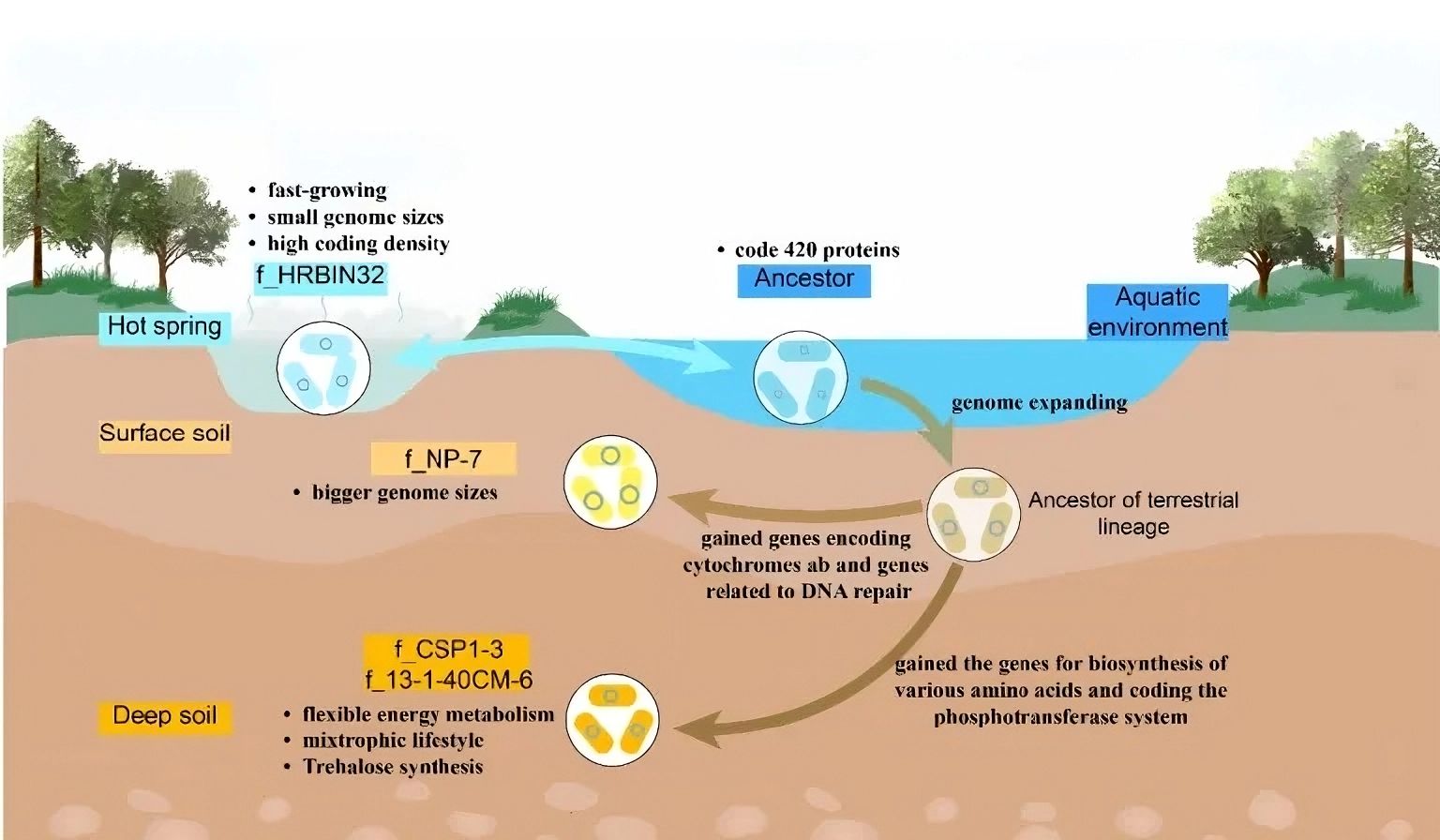Discovery of hidden microbes that purify water without us knowing 💧
Published by Cédric,
Article author: Cédric DEPOND
Source: Proceedings of the National Academy of Sciences
Other Languages: FR, DE, ES, PT
Article author: Cédric DEPOND
Source: Proceedings of the National Academy of Sciences
Other Languages: FR, DE, ES, PT
Follow us on Google News (click on ☆)

These discoveries shed light on a little-known aspect of the "critical zone" - this interface between atmosphere, soil and rocks that regulates vital cycles. Researchers highlight the unique adaptation of these microbes to resource-poor environments, where they filter residual pollutants.
A new microbial phylum with aquatic origins
Analysis of samples taken up to 69 feet (21 meters) deep in the United States and China revealed the dominant presence of the CSP1-3 phylum. These previously unknown microbes account for up to more than half of local microbial communities. Their abundance contrasts with that of surface soils, where no species usually exceeds a few percent.
Genetic data indicate these organisms descend from aquatic ancestors living in hot springs or lakes millions of years ago. Their evolution shows at least one major transition: from aquatic environments to surface soils, then to deep layers. This gradual adaptation explains their specialization in resource-poor environments.

Diagram illustrating the evolutionary history of an aquatic organism and the adaptive characteristics of the CSP1-3 phylum for each habitat.
Credit: Michigan State University
Unlike dormant microbes, CSP1-3 exhibit permanent metabolic activity despite very slow growth. Their genome reveals unique mechanisms, such as trehalose synthesis, allowing them to survive in these extreme conditions. These traits could explain their ecological success in soil depths.
Natural cleaners of groundwater
In the deep layers of the "critical zone", CSP1-3 microbes act as ultimate biological filters. While surface soils quickly treat rainwater, these lower strata retain liquids longer, allowing prolonged purification. Microorganisms there decompose carbon and nitrogen residues leached from the surface.
Their unique metabolism combines carbon monoxide oxidation, heterotrophic fermentation and use of inorganic substrates. These adaptations allow them to function despite oxygen lack and nutrient scarcity. Their role is essential: they remove the last pollutants that have passed through upper soil layers.
This discovery opens perspectives for bioremediation. Researchers are now trying to cultivate these microbes in the laboratory to study their potential against certain pollutants. Their particular physiology could contain novel solutions for treating contaminated water.